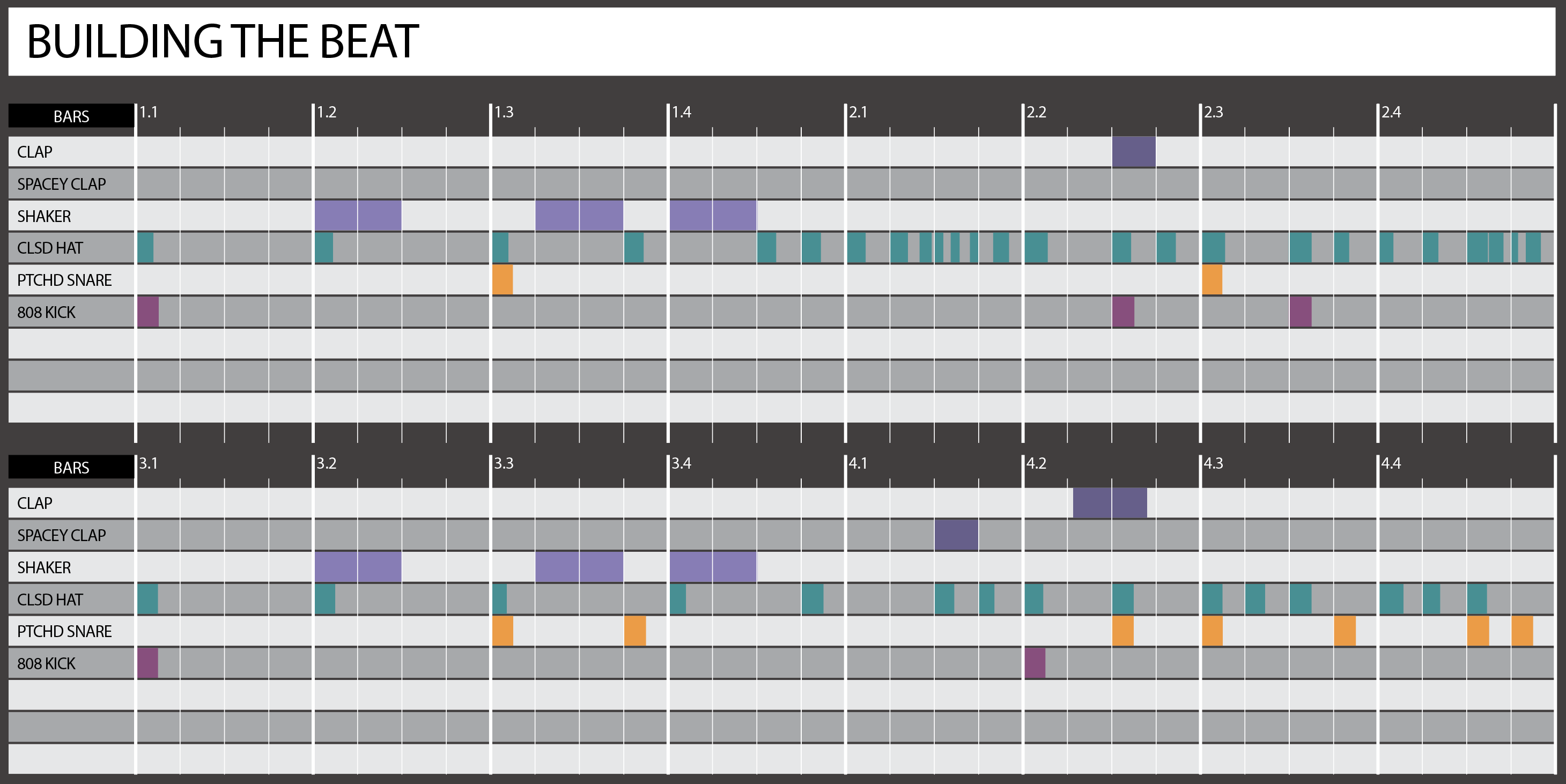Beat Building: how to make a lo-fi hip-hop beat
We show you how to program a lo-fi hip-hop beat using free drum samples from SampleRadar

In our Beat Building series, we're showing you how to produce beats, grooves and drum patterns in a variety of styles and genres, touching on various eras of production, to help you understand the key rhythmic elements behind many of today’s biggest tracks.
You can divide hip-hop beat production into two major trends: the MPC-powered beat chopping of ’90s beatmakers like DJ Premier, and the spacious 808 beats of the trap style that developed in the ’90s and ’00s in Southern US cities like Atlanta. These two styles are not entirely independent of each other however, and many modern hip-hop artists incorporate elements of both.
Hip-hop beats are designed to be rapped over, so you need to provide rhythmic thrust for your MC
Our beat fits somewhere between the two – it’s powered by spacious 808 bass and includes a hint of trap’s signature triplet hi-hats, but our snare and clap are treated with a little lo-fi crunch emulating the sampling techniques of the ’90s. We’re also taking a little influence from the woozy, lo-fi sound of cloud rap. The overall effect is channelling adventurous modern artists like Tyler, the Creator who incorporates elements of multiple styles.
Sound-wise, aim for punch and power – hip-hop beats are designed to be rapped over, so you need to provide rhythmic thrust for your MC while leaving plenty of space for their voice. Our groove here is relatively straight; we’ve added about 5% swing and we’ve used a fixed velocity throughout for a mechanised feel. We have manually nudged our claps off the grid to make the beat feel a little wonky in places though. A classic bpm for hip-hop is between 85-100.
Building the beat...

We start with the KICK. This is a long, powerful 808 kick, tuned to the root of the track as it’s also providing the primary bass. By bouncing this and loading it into a sampler we get more control over the pitch and decay envelope. Kicks are placed sparsely, on the first beat of bars 1 and 3, but avoiding the first beat of 2 and 4.
Next, the SNARE sits on the third beat of each bar, with a few extra hits to create a slight fill in bars 3 and 4. We’ve used a drum machine snare, processed using an emulator of a classic Akai S900 sampler to add crunch. We’ve also pitched the snare down a touch and boosted the attack for a punchy hip-hop feel.
Our HI-HAT is a short, metallic 808-style closed hat. We start by placing hits on every beat, creating a simple straight rhythm. Next we change our grid to triplet mode, and add short, rapid-fire flourishes, mostly in bars 2 and 4, creating the ‘marching’ feel of trap beats.
Get the MusicRadar Newsletter
Want all the hottest music and gear news, reviews, deals, features and more, direct to your inbox? Sign up here.
Our hi-hat is joined by a simple, short SHAKER sound in bars 1 and 3. Finally, we add some CLAPS, again processed with an Akai S900 emulator for low bitrate crunch. We use two claps; the second is shorter but sent to a reverb to add space.
Our lo-fi feel comes from the processing. We add saturation across the whole beat to gel everything and add presence to the kick. For our woozy, cloud rap feel we treat our hi-hat with some modulated effects: a resonant filter driven by a slow LFO, a BBD style chorus and a little auto-pan. Finally, we use a transient shaper across the whole beat.
Trap tracks can be very spacious, and often feature few music elements beyond a basic beat. More old-school or melodic hip-hop usually includes a sampled hook though. Try a short loop of pitched down piano, lo-fi synths or a soul/gospel vocal.
Get started on building a lo-fi hip-hop beat with these free samples:


Future Music is the number one magazine for today's producers. Packed with technique and technology we'll help you make great new music. All-access artist interviews, in-depth gear reviews, essential production tutorials and much more. Every marvellous monthly edition features reliable reviews of the latest and greatest hardware and software technology and techniques, unparalleled advice, in-depth interviews, sensational free samples and so much more to improve the experience and outcome of your music-making.
"If I wasn't recording albums every month, multiple albums, and I wasn't playing on everyone's songs, I wouldn't need any of this”: Travis Barker reveals his production tricks and gear in a new studio tour
“My management and agent have always tried to cover my back on the road”: Neil Young just axed premium gig tickets following advice from The Cure’s Robert Smith










